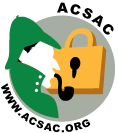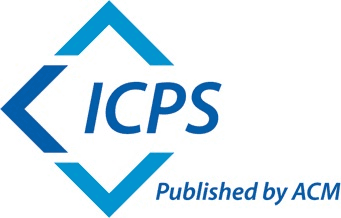Program Protection and Reverse Engineering Workshop (PPREW)
The 4th Program Protection and Reverse Engineering Workshop (www.pprew.org) will be held in New Orleans, Louisiana, Tuesday, December 9, 2014, in conjunction with the Annual Computer Security Applications Conference (ACSAC). ACSAC will be held at the Hyatt French Quarter, a New Orleans hotel located in the historic French Quarter.
Program protection and reverse engineering are dualisms of good and evil. Beneficial uses of reverse engineering abound: malicious software needs to be analyzed and understood in order to prevent their spread and to assess their functional footprint; owners of intellectual property (IP) at times need to recover lost or unmaintained designs. Conversely, malicious reverse engineering allows illegal copying and subversion and designers can employ obfuscation and tamper-proofing on IP to target various attack vectors. In this sense, protecting IP and protecting malware from detection and analysis is a double-edged sword: depending on the context, the same techniques are either beneficial or harmful. Likewise, tools that deobfuscate malware in good contexts become analysis methods that support reverse engineering for illegal activity.
PPREW is a forum for researchers and practitioners in academia, industry, and government who focus on analysis, security, and protection in software and hardware systems. PPREW invites papers on practical and theoretical approaches for program protection and reverse engineering used in beneficial contexts, focusing on analysis/deobfuscation of malicious code and methods/tools that hinder reverse engineering. Topics of interest include, but are not limited to:
- Polymorphic variation (obfuscation / deobfuscation)
- Tamper-proofing
- Hardware-based protection
- Side channel analysis vulnerabilities
- Theoretical analysis frameworks:
- Abstract Interpretation
- Homomorphic Encryption
- Term Rewriting Systems
- Machine Learning
- Large Scale Boolean Matching
- Software watermarking
- Digital fingerprinting
- Reverse engineering tools / techniques
- Program / circuit slicing
- Component / functional Identification
- Source code (static/dynamic) analysis
- Information hiding and discovery
- Virtualization for protection and/or analysis
- Forensic and anti-forensic protection
- Moving target and active cyber defense
Submissions: Original, unpublished manuscripts of up to 12-pages including figures and references must follow the ACM SIG proceedings format. All submissions must be in PDF and paper templates are available for LaTeX and Word at: http://www.acm.org/sigs/publications/proceedings-templates. Authors should apply ACM Computing Classification categories and terms. The templates provide space for this indexing and authors should refer to the Computing Classification Scheme at: http://www.acm.org/about/class/1998. Submitted papers must adhere to the ACM Copyright Policy and the ACM Policy on Plagiarism. Concurrent submissions to other conferences, workshops, journals, or similar forums of publication are not allowed. Submissions that do not meet these guidelines may not be considered.
The URL for submission of papers is through Easy Chair: https://easychair.org/conferences/?conf=pprew4
Publication: For accepted papers, at least one author must register for, attend, and make a presentation at PPREW in order for the paper to appear in the workshop proceedings. Proceedings will be published through ACM International Conference Publication Series (ICPS) and will appear in the ACM Digital Library.
To expedite publication of accepted papers in the workshop proceedings, camera ready papers should have the following properties:
- PDFs should be optimized for fast web viewing.
- PDFs should Include the rights management statement and bibliographic strip on the bottom of the first page left column. The specific wording of this statement is emailed directly to the authors of accepted papers through the ACM Rights Management System.
- All fonts in the PDF must be Type 1 fonts (scalable), not Type 3 (bit-mapped).
- All fonts MUST be embedded within the PDF file.
Documentation (http://www.acm.org/publications/WORD%20to%20PDF%20instructions.txt) on how to embed fonts is provided by ACM. Authors should download and use the ACM Digital Library optimal distiller settings file, ACM.joboptions (http://www.acm.org/publications/ACM.joboptions).
Important Dates
| Manuscript Submission: | October 10, 2014 |
| Acceptance Notification: | November 10, 2014 |
| Final Manuscript due: | November 28, 2014 |
| Workshop Date: | December 9, 2014 |
Organizing Committees
Program Co-chairs
Mila Dalla Preda, University of Verona, Italy
J. Todd McDonald, University of South Alabama, USA
Proceedings Chair
Natalia Stakhanova, University of New Brunswick, Canada
Program Committee Members include:
Todd Andel, University of South Alabama, USA
Guillaume Bonfante, Loria, France
Adam Bryant, Wright State University, USA
Mihai Christodorescu, Qualcomm-IBM Research, USA
Jack Davidson, University of Virginia, USA
Saumya Debray, University of Arizona, USA
Bjorn De Sutter, University of Ghent, Belgium
Michael Grimaila, Air Force Institute of Technology, USA
Yuan Xiang Gu, IRDETO, Canada
Sylvain Guilley, TELECOM-ParisTech and Secure-IC S.A.S., France
Johannes Kinder, Royal Holloway, University of London, UK
Andy King, University of Kent, UK
Sergio Maffeis, Imperial College London, UK
Frederico Maggi, Politecnico di Milano, Italy
Stephen Magill, Galois, USA
William Mahoney, University of Nebraska Omaha, USA
Jean-Yves Marion, INPL, France
Mathias Payer, Purdue University, USA
Mark Pleszkoch, Oak Ridge National Lab, USA
Clark Thomborson, University of Auckland, New Zealand
Axel Tillequin, EADS Innovation Works, France
If you are interested in attending please check off the appropriate box on the conference registration form and add in the Program Protection and Reverse Engineering Workshop (PPREW) fee. Lunch will be included as part of the workshop fee.






